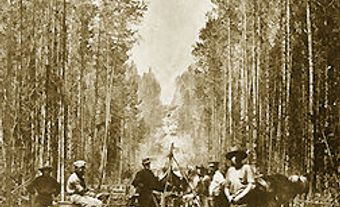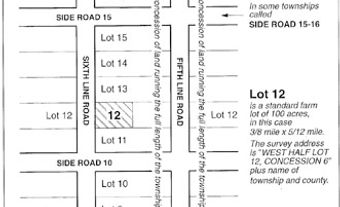
The boundaries of Canada — and the provinces and territories within it — have shifted and changed throughout the country’s history. Key shifts coincided with the Treaty of Paris in 1763, the establishment of the 49th parallel with the Convention of 1818 and the Oregon Treaty in 1846, and the gradual establishment of provincial and territorial boundaries from Confederation onward.
Late 1600s – Late 1700s
The evolution of Canada as a political entity began with the arrival of French and English colonists at the beginning of the 17th century, and the establishment of the Hudson’s Bay Company (HBC) in 1670. The territories and boundaries of the Indigenous people who lived on the continent before the arrival of Europeans were generally ignored by the French and English up to, and following, Confederation.
By the Treaty of Paris (1763) all of eastern North America except Saint-Pierre and Miquelon became British. Britain established governments for Nova Scotia (which included present-day New Brunswick and Prince Edward Island), Newfoundland (which included Labrador, Île d'Anticosti, Îles de la Madeleine), and Québec (lower St Lawrence watershed). All other territory was assigned to the Crown or to the HBC. In 1769 St John's Island (Prince Edward Island) was administratively separated from Nova Scotia, and in 1774 Québec was enlarged to include Île d'Anticosti, Îles de la Madeleine and the land southwest between the Ohio and Mississippi rivers.
Late 1700s to Mid-1800s

After the United States became independent from Britain, Québec was confined to the area north of the Great Lakes, and in 1784 New Brunswick was created as a separate British colony and a home for Loyalists. From 1784 to 1820 Cape Breton was also administered as a separate colony.
After the US acquired Louisiana from France in 1803, it became necessary to determine its boundary with British territory west of the Great Lakes. This was established as essentially the 49th parallel to the Rocky Mountains by the Convention of 1818; the area west of the Rockies was occupied by both Britain and the US.
The limits between British territory and Russian Alaska were described in 1825. The area under joint British-American occupation was divided by the Oregon Treaty of 1846. The 1842 Ashburton-Webster Treaty settled the New Brunswick-Maine boundary, and described the boundary between British North America and the US from Lake Huron to Lake of the Woods. In the far West, the British colonies of Vancouver Island (established 1849) and British Columbia (established 1858) were united in 1866.
Confederation: Late 1800s

In 1867, three colonies of British North America — Canada, Nova Scotia and New Brunswick — were united in Confederation, with the former Province of Canada being divided into Ontario and Québec.
In 1870 Rupert’s Land and the North-Western Territory, purchased 1869-70 by the federal government from the Hudson’s Bay Company, were officially transferred to Canada, and from them a small province of Manitoba was created to accommodate agricultural colonies established after 1812 (see Red River Colony). In 1871 British Columbia joined the federation, and Prince Edward Island followed in 1873.

In 1876 the District of Keewatin was created from part of the North-West Territories to deal with the administrative problems arising from settlement north of Manitoba. The Territories were enlarged in 1880, when British rights to the Arctic islands passed to Canada, but were reduced again when Manitoba, Ontario and Québec were enlarged in 1881, 1889 and 1898. The remainder of the North-West Territories was divided into provisional districts for administrative and postal purposes, beginning with Athabaska, Alberta, Saskatchewan and Assiniboia in 1882, and then Yukon, Mackenzie, Franklin and Ungava in 1895 (in 1898 Yukon District became a separate territory in order to provide proper government for gold seekers moving into the region; see Klondike Gold Rush).
Early 1900s – Present

In 1905, as agricultural settlement spread into the Prairies, the provinces of Alberta and Saskatchewan were created. Their expansion north to the 60th parallel gave rise to requests from Manitoba, Ontario and Québec for northern extensions. In 1912 these provinces attained their present limits, and the North-West Territories districts disappeared except for Mackenzie, Keewatin (which had been a disputed territory first governed by Manitoba and then in 1912 awarded to Ontario) and Franklin.
The final addition of territory came when Newfoundland joined Confederation in 1949 with the area determined by the Imperial Privy Council in 1927.
In 1985 the waters of the Arctic Archipelago were delineated. Canada claims full sovereignty over all those waters, including the straits of the Northwest Passage. The Northwest Territories was further divided in 1999 with the creation of the territory Nunavut, which includes most of the Arctic Archipelago and the mainland roughly east of the treeline.

 Share on Facebook
Share on Facebook Share on X
Share on X Share by Email
Share by Email Share on Google Classroom
Share on Google Classroom


